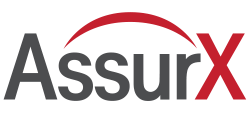September 26, 2024
For the Utility industry, regional entities are increasingly focusing on Internal Controls as a measuring stick for overall compliance performance.
Developing and executing rock-solid Internal Controls with an automated compliance management software solution can help maintain compliance not only during a NERC audit but at all times.
Those utilities that are most successful from a compliance perspective don’t implement these systems just to achieve basic compliance. Rather, their overarching aim is to be safe, resilient and reliable—compliance is just a byproduct of that goal.
Regulations, Regulations and More Regulations
The fundamental challenge of managing NERC Internal Controls comes from the sheer volume and complexity of requirements that utilities must comply with. Utilities must execute and document thousands of tasks to achieve compliance, from software patching to password changes, employee training, vegetation management, and more.
For example, to comply with CIP-004, CIP-007, and CIP-010 alone, a utility may need to track and document over 50,000 individual compliance items. Each NERC requirement also has very strict timelines for completing and documenting tasks, whether monthly, quarterly, annually, or other specified frequency.
What raises the stakes is that NERC expects perfect compliance every single time. Compliance violations can result in steep penalties of up to $1 million per day, or worse—a threat to grid reliability.
Trying to keep up with it all through traditional methods like calendar reminders and spreadsheets is a recipe for failure, with thousands of opportunities for mistakes.
What to Expect During a NERC Audit
In recent years, there’s been a shift in the auditor’s focus away from checking compliance items on a detailed level. Today, it’s a utility’s Internal Controls program that is under the microscope, focusing on higher-level processes and safeguards.
For example, an auditor isn’t going to ask about individual results from your CIP-007 patch checks. Rather, what they’re interested in is whether you have a foolproof way to ensure that those patches are going to be completed correctly every single time.
Common compliance gaps identified during NERC audits include:
- Inadequate documentation: You may have a process, but if it’s not documented, you can’t find it, and/or people aren’t following it, it’s not really a process. If you can’t produce documentation as proof of compliance, the control may as well not exist at all as far as the auditor is concerned.
- Inconsistent application of controls: Even well-designed controls may be poorly implemented or consistently applied across the organization.
- Change management: When things change in the organization, do you have mechanisms in place to keep up with it in terms of maintaining compliance? Auditors will want to see how you’re managing to change to address and prevent new risks.
If you can demonstrate that you have a failsafe system for ensuring compliance, auditors will likely focus their attention on other areas. Poorly implemented controls, on the other hand, are likely to result in increased scrutiny, particularly for high-risk areas like CIP standards.
Viewed through this lens, your Internal Controls program must be built specifically to prevent anything from falling through the cracks. For many, the missing element in being able to successfully juggle all the moving parts throughout the organization is automation.
Automation + Integration = Compliance
The key to achieving perfection in your Internal Controls is building an automated system that replaces manual steps with automated workflows and system oversight. Integration with other systems is also essential to strengthening those controls and eliminating potential compliance gaps.
Integration is the second piece in the puzzle, eliminating the inherent communication gaps that often lead to compliance violations.
For instance, asset configuration management tools like Tripwire can monitor system changes and alert the team if unauthorized software is detected. From there, an investigation can be launched and documented within the compliance management system to prevent a security breach and ensure compliance.
Another example would be integrating the software with your learning management system (LMS), where:
- The compliance system automatically communicates with the LMS to initiate training before certificates expire.
- The LMS delivers the training and documents completion.
- The LMS automatically populates the compliance management system with the required evidence.
Digitalization Drives Efficiency and Reliability
Maintaining a flawless Internal Controls program is no small feat, but it’s one that must be achieved to avoid penalties and maintain grid reliability for customers.
One basic challenge underlying these issues is resource constraints as NERC requirements become more numerous and stringent each year. Automated software helps utilities handle the growing workload, manage change effectively with existing staff resources, and improve system reliability overall.
Conclusion
The journey toward robust Internal Controls in the utility industry is both complex and critical. As NERC regulations continue to evolve, utilities must embrace automated compliance management solutions to navigate the labyrinth of requirements effectively. By prioritizing not just compliance but a holistic commitment to safety, resilience, and reliability, utilities can foster a culture that values thorough documentation, consistent application of controls, and proactive change management.
The integration of automated systems not only streamlines compliance efforts but also strengthens communication across departments, significantly reducing the risk of violations. This approach empowers utilities to maintain high standards of operational integrity while alleviating the burden of manual processes. Ultimately, investing in solid Internal Controls through automation is not merely about avoiding penalties; it’s about safeguarding the grid’s reliability for all stakeholders. As the industry continues to adapt, those who view compliance as a foundational element of their operational strategy will undoubtedly emerge as leaders in resilience and reliability.
About the Author
Scott Crow is the Senior Business Systems Strategist – Energy & Utilities at AssurX, where he drives strategic innovation and technological transformation across the critical infrastructure landscape. With extensive experience in delivering IT/OT solutions, Scott specializes in tackling the most pressing cybersecurity and compliance challenges for the energy and utilities sector. His expertise lies in aligning technology with business objectives, seamlessly integrating people, process, and technology to develop solutions that optimize operational performance while safeguarding critical systems.


